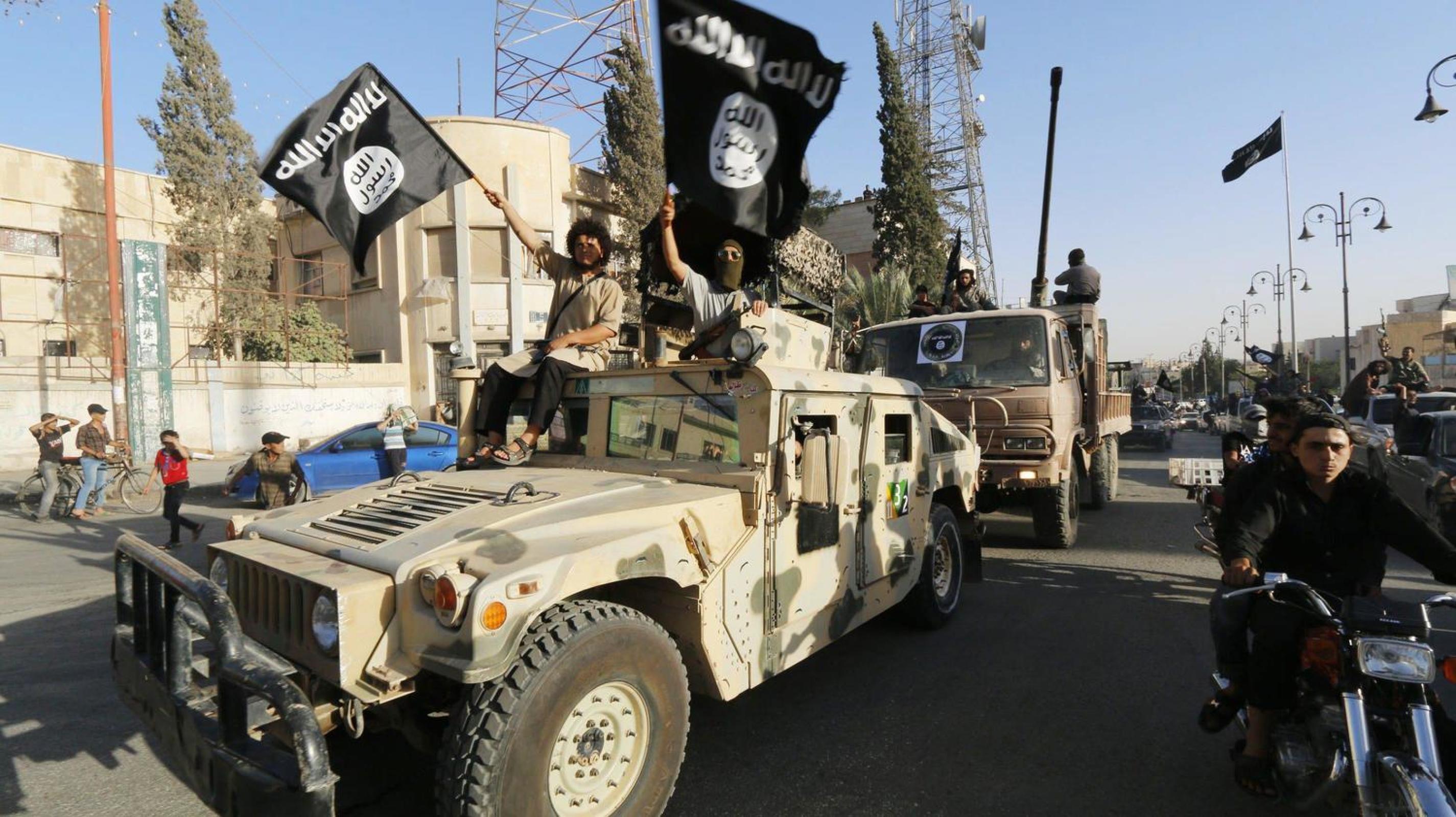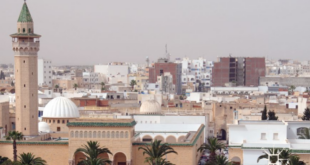The rise of the Islamic State group (which will be referred to as ISIS), from the perspective of those in the Middle East drawn to it, rather than Europe where the French scholar Olivier Roy has proposed the idea of the “Islamization of radicalism,” can be discussed within the framework of a number of deeper phenomena in Arab societies since the mid-twentieth century.
Post-colonial Arab states have been a failure on numerous levels: they have failed both economically (including an affluent oil-and-gas state like Saudi Arabia, where ideological saturation has replaced wealth distribution), and politically, in terms of restoring Palestinian rights in the face of Zionism, establishing full independence from the old imperial powers and creating national spaces that respect human dignity. In the dying embers of Arab nationalism, a monumental structure so inspiring that the post-1967 cinema or literature or other elements of the popular and political culture are still sometimes referred to as “post-defeat” (ma ba‘d al-hazima).
nothing rose to take its place. In the depoliticized wasteland of Arab neoliberalism and the cult of petrodollar consumerism anti-modern, antediluvian movements have found space to grow. Neither Saudi Arabia’s project to merge its shari‘a state with elements of Western modernity nor Egypt’s post-Nasser, pro-West, repackaged police state, Arab nationalism-lite offer a model for the Arab region, despite the efforts of both to project themselves politically and culturally throughout.
Discussion of ISIS has, however, been dominated by security studies and policy discourse, on the one hand, and the not-unconnected obsession with the minutiae of Islamic theology/ideology on the other. Salafism, and what has been termed Jihadi Salafism as a sub-group of it, is of much more recent provenance than the public discourse would have us imagine. Suffice to say, there was no Salafism as an abstract noun denoting a particular ideological position involving Islamic jurisprudence and theology as we understand it today even in the nineteenth century, when the term “Salafi” began to come into use among some religious scholars in Damascus and Baghdad. Salafism—as the idea was then developed by Islamic writer Muhibb al-Din al-Khatib (1886–1969) in his Cairo bookshop, French Orientalist historian Louis Massignon (1883–1962), and Muhammad Abduh’s pupil and publisher of al-Manar Rashid Rida (1865–1935)—denoted a wide range of views, foremost among them the modernist movement of intellectual/religious scholars Jamal al-Din al-Afghani (1839–97) and Muhammad Abduh (1849–1905). It was not until the 1920s that the Saudi-Wahhabi state began to appropriate the term. In this it was successful, such that by the 1960s movements like the Muslim Brotherhood had more or less given up its usage, ceding the semantic space to Wahhabism. It included under its aegis, however, a number of trends, encompassing the hadith-based approach opposed to adherence to the Sunni legal schools of famed hadith scholar Muhammad Nasir al-Din al-Albani (1914–99). It also influenced and was influenced by Muslim Brotherhood ideologues such as the Egyptian Sayyid Qutb (1906–66) or the Syrian Muhammad Surur Zayn al-Abidin (b. 1938) (producing the Sahwa movement).
The main radical Salafi texts of the modern era, which we might date to Qutb’s Ma‘alim fi-l-tariq (Milestones, 1966), are remarkably political. They may have emerged as a refutation of Nasserism and secular Arab nationalism, but it is quite possible to read them as reconfigured anti-imperial ideology in the widest sense, meaning that they emerge from domestic problems of justice and repression that are intimately tied to the failed and false independencies produced by post-colonialism. For example, Wahhabi-Salafi activist Juhayman al-Utaybi’s (1939–80) 1979 revolt in Saudi Arabia—seizing control of the Grand Mosque in Mecca until Saudi and French forces crushed the rebellion two weeks later—has been discussed consistently in parallel with the Ikhwan revolt of the 1920s against the compromises regarding purity of Islamic doctrine of Abd al-Aziz in the process of state building and securing British imperial support for the project.[3] It is depicted that way in a recent account of the events by Nasir al-Huzaymi, a one-time companion of Juhayman who in al-Huzaymi’s telling was an “ideological extension”[4] of the Ikhwan, obsessed by his Utaybi tribal origins and set on revenge for the repression of the Ikhwan.[5] Al-Huzaymi is a Saudi national who began recounting his experiences in the Saudi daily al-Riyadh in 2003, and while there is no reason to question the historical detail of his account, its presentation within the sphere of Saudi public discourse must be taken into consideration. Al-Huzaymi is no dissident. In his book he is careful to state in numerous places that he disagreed with Juhayman over taking control of the mosque and his theory of the Mahdi, and thus broke with him.[6] Nonetheless, al-Huzaymi still manages to point out, albeit without detail, that Juhayman was interested in establishing “a just state” (dawlat ‘adl) and may be considered a “revolutionary."[7]
Juhayman composed 14 pamphlets in all, which circulated through Saudi mosques in 1978–79, but they were printed in Kuwait at the printing press of the leftist al-Tali’anewspaper, which was impressed by the fact that their author was someone on the run from Saudi security forces.[8] The first of these works is in many ways the most enlightening in terms of his inspirations. Titled “Raf‘ al-iltibas ‘an millat man ja‘alahu Allah imaman li-l-nas” (“Lifting the Confusion on Denominations of Those God Placed as Imams of the People”), it provided the framework for Maqdisi’s seminal jihadist tract Millat Ibrahim wa da‘wat al-anbiya’ wa-l-mursalin (The Denomination of Ibrahim and the Call of Prophets and Messengers, 1984). In this text, Juhayman can be seen challenging the political conceptualization of modernity as received by the West, as his predecessors in the jihadi literature had done, as well as the power dynamics of a tyrannical system. He states at the outset that he seeks to clarify the nature of the religion of Ibrahim in order to demonstrate “the difference between truth and falsehood and show that it is contrary to what some people claim concerning Islam as a religion of ‘civilization’ (hadara);[9] thus they mix East with West, act like them [Westerners] and live among them.”[10]
This warning is primarily directed to the ulama and their followers, whom he divides into three groups: those who focus on combatting Sufism, visiting graves, and other such heretical innovations (core state Wahhabi teachings);[11] those whose concern is hadith studies and who object to dogged championing of one or another legal school (a reference to his mentor Albani); and those obsessed with challenging communism and who seek to dominate government positions (the Muslim Brotherhood). His objection to the first two groups is that they only direct their attention to people “with no authority” while staying silent on those who have power yet “destroy the religion of God.” He gives as an example the application of severe (hadd) penalties to the weak but not the powerful, while these ulama give themselves the excuse that they are weak and incapable of creating change. As for the third group, they are engaged in a political project to “control thinking” (tahkim al-afkar), but they belittle those who engage in the real work of combatting polytheism and innovation in religion. They accept positions as bureaucrats, preachers, teachers, soldiers, and experts, but do not combat the infidels regardless of the cost as the Prophet did, while this willingness to suffer for a higher principle is the essence of the ‘religion of Ibrahim.’
In his seminal study of radical Muslim politics in 1970s Egypt, The Prophet and Pharaoh: Muslim Extremism in Egypt (1985), Gilles Kepel is forthright in arguing that jihadist zealots were motivated by the poverty and hopelessness of the post-colonial police state. Kepel presents a comprehensive analysis of the jihadi phenomenon up to that point in Egypt. He is clear about the genesis of Qutb’s ideas. A writer of fiction and literary criticism, he began to engage in political writing from 1949 with ten works, eight of which concern Islamist doctrine and were written after 1951 when he joined the Brotherhood. The totalitarian character of the military regime was perceived early on by the Brotherhood, who suffered in their concentration camps, leading Qutb to engage in a comprehensive critique of the modern state in terms of the classical Islamic tradition whose conceptual language a generation of devotees subsequently sought to develop. In other words, “the language and categories adopted by Qutb and his emulators captured the suffering, frustration, and daily demands of certain components of that society.”[12] Qutb believed the prison guards, torturers, rulers, and those who failed to challenge them had forgotten God; only the imprisoned Brothers were true Muslims.[13] Like Lenin’s pamphlet “What Is to Be Done?” Qutb intended Ma’alim fi-l-tariq as a manual for the vanguard who would lead an Islamic resurrection.[14]
One reader inspired by Qutb was Shukri Mustafa, founder of what was termed in Egyptian media at the time as the al-Takfir wa-l-Higra group. Mustafa was tried and put to death with his followers in 1977 for the murder of a former government minister. Kepel says that the state media made sure to present the group’s ideology and practices in as ludicrous a light as possible, ensuring that Mustafa was seen as an “insane criminal” in rejecting state employment and involvement in the education system and arguing, as he did at his trial, that the Prophet did not approve of learning to write unless it had a clear purpose.[15] Kepel places this thinking in the context of the socioeconomic conditions of millions of people who struggled to obtain an education, find government employment then get married and set up home in the corrupt failing Egypt of the 1970s. Their choice was withdrawal, stylized as prophetic hijra. With a prosaic sympathy that perhaps stands in contrast to the neo-conservative turn he took in the wake of 9/11, Kepel sees the group as “the lost children of a Third World independent state who were convinced, in effect, that life was intolerable”;[16] they were outcast victims of “disorientation at the painful changes wrought by modernity.”[17] Mustafa’s choice was an “impassioned revolt of the poor, the disinherited, and the hopeless.”[18] Aggregating data regarding the jihad group that assassinated Anwar Sadat and the Military Academy group that attempted a military coup in 1974, Kepel notes they were largely from the newly constructed districts of rural migrants around Cairo, “children of the rural exodus” who found the city incapable of providing them with the keys to modernity.[19] “They are the living symbols, and their numbers are massive, of the failure of the independent state’s modernization projects,” Kepel writes.[20]
In more recent times, Fawaz Gerges writes in The Rise and Fall of Al-Qaeda (2011) that exaggeration and Islamic exceptionalism had taken grip of what became an industry. “Evidence and reality no longer matter in a world built on perception and illusion. Every plot and incident is viewed as an affirmation of al-Qaeda’s invincibility and reach: to the American leadership bin Laden and his successors appear to be 100 feet tall,” he argues.[21] The militants’ lack of a popular base was made apparent by the Arab uprisings, while domestic and transnational jihadists proved to be their own worst enemies with indiscriminate violence that “alienated ordinary Muslims in Egypt, Algeria, Iraq, Lebanon, Saudi Arabia, Indonesia, and elsewhere.”[22] The terrorism narrative of the West living under constant and imminent threat becomes then an institutionalized self-fulfilling prophecy among policymakers, government officials, and the general public. Al-Qa‘ida became an industry, creating in the USA, for one, a security bureaucracy of some 854,000 people, while “most scholars of the Middle East have avoided discussion of the War on Terrorism, either fearful or suspicious of the politics involved.”[23] The response to the challenge of terrorism became an “ideology of its own.”[24] ISIS is different in that it manages territory, resources, and state structures, but beyond ungoverned space and conflict zones of opportunity there is no reason to believe it would be capable of winning any more adherents than al-Qa‘ida.
Is that what is happening with ISIS? The literature on the group is by now vast. Popular angles taken have included the ideology, the eschatology, and Sunni resentment. For example, an article in The Atlantic titled “What ISIS really wants” obsessed over Islam—is it Islamic, is it not?—and argued that the movement “derives from coherent and even learned interpretations of Islam,” even if it is run by psychopaths. Jessica Stern and J.M. Berger in ISIS: The State of Terror (2015) look at the apocalyptic discourse: ISIS magazine Dabiq, a recruitment manual aimed at non-Arabs, is named after a hadith that talks of gathering the armies of Islam in the final days at Dabiq, a plain north of Aleppo.[25] ISIS’s Arabic publication, the weekly al-Naba’, tellingly does not make reference to Dabiq or other elements of apocalyptic hadith in its title, however; while the Dabiq hadith has been cited before by Salafists, notably Juhayman. Finally, Michael Weiss and Hassan Hassan in ISIS: Inside the Army of Terror (2015) explain the group’s rise as a function of Assad regime's manipulation and Sunni disenfranchisement in Iraq. While there is no doubt something to be said for each of these interpretations, they express the concerns of policy discourse, thus missing the deeper issues of dysfunction that the post-Arab Spring counter-revolutionary critique of the old order has so crudely laid bare. They also reflect the turn that Orientalist discourse on Islam has taken since the demise of modernization theory and the notion that the Arab–Islamic region would enter modernity on Western terms: the exceptionalist, “cultural turn” that envisages different “Islams” (the liberal among them and the Salafi), as Joseph Massad argues in Islam in Liberalism (2015).[26] Those interested in what has come to be termed Salafi Islam risk falling into the trap of neo-imperial interests that have hardly shirked from deploying the most obscure or belligerent trends it could identify, in cooperation with local facilitators (against Gamal Abd al-Nasser, the Soviets, the Baath, and so on).[27]
Social readings of foundational jihadi texts such as that of Kepel have become rather unfashionable, sidelined by the exotica of Islamic theology and radicalisation discourse. The space to think about an issue like ‘jihadism’ away from the policy sphere has shrunk. What is left is a function of what Gayatri Chakravorty Spivak termed the “interested desire to conserve the subject of the West, or the West as subject”[28]—obsessive attention to the otherness of the jihadist, which allows the Europeans and their extensions to continue defining themselves as a civilizational package that is everything the jihadist is not.
 Arab Media & Society The Arab Media Hub
Arab Media & Society The Arab Media Hub





